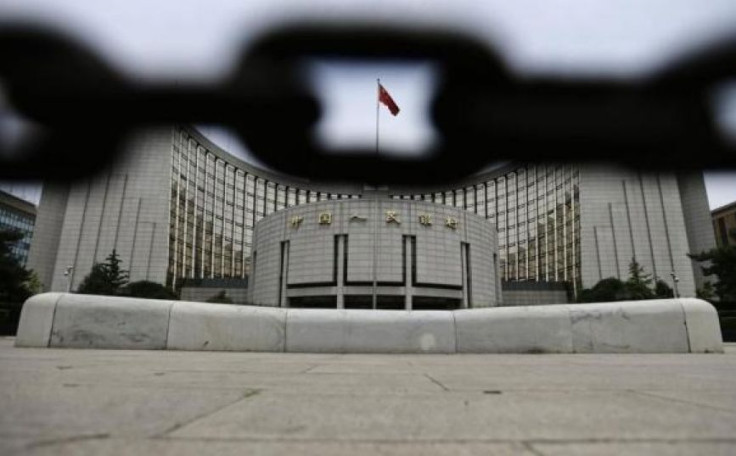China’s Interest-Rate Cut Likely To Hurt Banks, Small Borrowers

SHANGHAI (Reuters) -- China’s latest interest-rate cut is set to dent the profitability of domestic lenders, especially midsize banks, which are already suffering from higher rates of bad loans and a slowdown in profit growth. The People’s Bank of China unexpectedly cut rates late Friday, stepping up efforts to support small and misize enterprises, or SMEs, which are struggling to access credit and repay loans as the world’ second-largest economy slides to its slowest growth in nearly a quarter of a century.
The central bank slashed the one-year benchmark lending rate by 40 basis points to 5.6 percent and the one-year benchmark deposit rate by 25 basis points to 2.75 percent.
The narrowing of interest-rate margins will eat into lenders’ profitability, with Jiahe Chen, chief strategist at Cinda Securities, predicting it will cut profits by as much as 5 percent.
Interest margins generated from lending have already been shrinking for second-tier lenders, which have been squeezed by competition from online financiers and a rise in funding costs stemming from an industry tussle for deposits.
Fitch Ratings downgraded its credit rating of China Guangfa Bank, a midsize lender, two days before the rate-cut announcement, and said the level of off-balance-sheet lending among second-tier banks was a concern.
The squeeze on profits will make it tougher for lenders to raise capital to meet new international rules designed to protect depositors from banking collapses. Retaining profits is one way banks can build up regulatory capital.
“In the past when Chinese banks disbursed loans, they mainly relied on profits from their own capital to replenish their capital,” Jiang Jianqing, chairman of China’s biggest commercial bank, the Industrial and Commercial Bank of China Co. Ltd., said at a conference in Beijing Saturday.
‘We Won’t Start Lending Now’
The People’s Bank of China said in announcing the rate cut that it wanted to help smaller firms gain access to credit. While the measures may ease the financing costs of these firms’ existing loans, it is unlikely to encourage banks to write new loans to lower-rung borrowers, bankers said. Smaller companies are considered high risk, and banks do not want to increase their exposure to weaker borrowers, they said.
“At the moment, banks have a lot of problems with them, they have higher rates of default … we’re suspicious of their creditworthiness, so we’re very careful about lending to them,” said a senior loan officer at a top-10 bank. He declined to be identified because he was not authorized to speak to the media.
Among China’s five largest banks, lending will continue to favor China’s state-controlled companies, state-invested enterprises and those involved with large projects overseen by the government, bankers said.
In the third quarter, China’s banks reported rising bad loans and slowing profit growth, amid fears a credit crunch could spread further.
“We’ve been moving away from SME lending over the last two years in my department. We won’t start lending now,” said another senior loan officer at a top-five bank.
(Reporting by Engen Tham; Additional reporting by Koh Guiqing in Beijing, Lawrence White and Lisa Jucca in Hong Kong; Editing by Kazunori Takada and Mark Bendeich)
© Copyright Thomson Reuters 2024. All rights reserved.





















